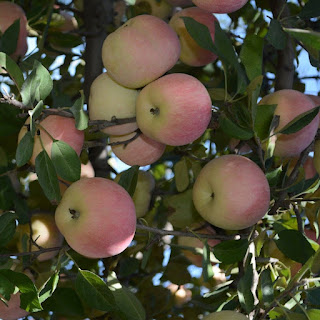Jimson weed ( Dhatora )
Jamsonweed a Species of Thorneapple
Common Name:
- Dhatora
- Manit
- Sacrid Datura
- Thorneapple
- Angeltrumpet
Botanical Name:
Datura wrightii
Name Story:
Western jimson weed:
it is sometimes called "western Jimson weed" because of its similar appearance to Datura stramonium, the true jimson weed.
Nightshade:
In clear weather, flowers bloom in the morning and evening and close during the heat of the day depending on the water availability. In cloudy weather, they may bloom earlier and longer. Therefore, it is called the nightshade.
Symbolism:
Hex breaking, Sleep, Protection
Scientific classification:
Genus:
Datura - Thornapples, Devil's weeds, Devil's trumpets, Jimsonweeds, Hell's bells, Moonflowers
Family:
Solanaceae - Nightshade, Solanaceous plants, Potato
Order:
Solanales - Nightshades, bindweeds, gooseweeds, and allies
Class:
Magnoliopsida - Dicotyledons, Dicots, Eudicots
Phylum:
Tracheophyta - Vascular plants, Seed plants, Ferns, Tracheophytes.
Information:
Jimsonweed (Datura wrightii) is a flowering perennial plant in the nightshade family. It is commonly cultivated as an ornamental flower due to its good ability to tolerate drought. Jimsonweed is toxic to humans and pets, and could lead to convulsions and coma if ingested. Nevertheless, it was once used by several Native American tribes as part of a rite of passage.
Is the jimsonweed poisonous for humans?
Poisoning from jimsonweed is most likely to occur from accidental ingestion. All parts of the plant are toxic to humans, including the bark, flowers, fruit, stem, seeds, and roots. Eating jimsonweed can lead to severe illness. Symptoms of poisoning may include hot, dry, and flushed skin; hallucinations; dilated pupils; headache; delirium; fast and weak pulse; convulsions; and coma. It is often encountered on disturbed land or on roadsides with sandy soil.
What happens if my pet eats jimsonweed?
Jimsonweed is fatally toxic to humans, cats, dogs, and horses, and may produce a powerful hallucinogenic side effect. Always keep your pets away from jimsonweed.
Characteristics:
Plant Type: Herb
Lifespan: Perennial, Annual
Bloom Time: Late spring, Summer, Early fall, Mid fall
Plant Height: 1 to 5 feet
Spread: 1 to 5 feet
Flower Size: 4 inches
Habitat: Open land, disturbed land, along roadsides with well-drained, sandy soils.
Flower Color: White٫ Purple
Leaf Color: Green
Fruit Color:
Brown٫ Black٫ Copper
Stem Color:
Green٫ Silver٫Gray
Conditions Requirement:
Difficulty Rating:
Growing Jimsonweed is easy as long as you can give them what they need. They are sensitive to certain types of pests and diseases.
Sunlight:
Full sun, Partial sun
Hardiness:
25 ℉
Hardiness Zones:
4 to 9
Soil:
Sand, Loam, Clay, Acidic, Neutral, Slightly alkaline
Care Guide:
Water:
Moisture-loving, keep the soil moist but do not let water accumulate.
Planting Time:
Mid spring, Mid summer
Harvest Time:
Summer, Fall
Propagation:
Sowing
Uses:
Garden Use:
The rambling perennial jimsonweed adds interest to full-sun garden beds, nighttime gardens, and in borders, with its fragrant white trumpet blooms and spine-covered seed balls. They are also well-suited to container gardens or as part of xeriscapes, as they hold up well to drought. Companion plants included Aster and ornamental grasses.




Comments
Post a Comment